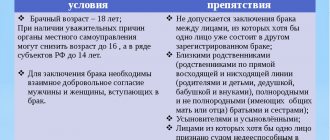Application and types of indirect piecework system
The amount of payment under the indirect piecework system depends on the following factors:
- output produced by key personnel;
- size of the wage fund;
- employee tariff rates;
- production rate values.
Unlike a simple piece-rate system, where wages depend directly on output, in an indirect piece-rate system, output affects wages partially, since support staff are not directly involved in production.
There are the following types of payroll calculation under the indirect piecework system:
- according to production norm;
- by number of employees served;
- payroll calculation;
- combined calculation.
The amount of wages calculated according to the production norm depends on the degree of excess of the norm, defined as the ratio of the actual volume of work to the normative one.
The first type of system is often used in enterprises where the main personnel are paid according to a piece-progressive or piece-bonus system , that is, there is the concept of a minimum standard. For example, salaries for machine tool adjusters, repairmen, and crane operators are calculated based on production standards.
The second type of calculation is used in cases where support personnel do not service equipment, but directly help the main personnel perform work - for example, for assistant masons, auxiliary workers, etc.
The salary in this case depends on the number of main employees served by the auxiliary worker, as well as on the basic tariff rate and individual coefficient. In this case, there may be no output standard, and the main personnel may receive wages according to a simple piece-rate or lump-sum system.
The condition for using this type of calculation is that the number of auxiliary workers should not differ much from the number of main workers.
When calculating the salary fund, remuneration for support staff is calculated as a percentage of total revenue . Used in small firms where one repairman or adjuster maintains several machines or assists several key employees producing a product.
The combined type of calculation is used in complex industries, where support personnel simultaneously set up equipment and provide actual assistance to main employees . An example is a metallurgical workshop, where there is a main team of steelworkers and a team of auxiliary workers who simultaneously perform the functions of equipment repairers and utility workers.
Indirectly – piecework wage system.
The indirect piecework wage system is used, as a rule, to pay workers in service and auxiliary industries.
Under such a system, the amount of wages for workers in service industries depends on the earnings of workers in primary production who receive wages on a piece-rate basis.
With an indirect piecework wage system, the wages of workers in service industries are set as a percentage of the total earnings of workers in the production they serve.
Example. An auxiliary production worker is given an indirect piecework wage, in which he receives 3% of the earnings of primary production workers.
In November, the earnings of primary production workers amounted to 86,000 rubles. The salary of an auxiliary worker for November will be:
86,000 rub. 3% = 2580 rub.
Chord system.
The lump sum wage system is used when paying a team of workers.
With this system, a team consisting of several people is given a task that must be completed within a certain time frame. The team is paid a monetary reward for completing the task.
The remuneration amount is divided among the team members based on how much time each team member worked.
Rates for each task are determined by the organization’s administration in agreement with the team’s employees.
Example. A team of two mechanics and one service technician repaired the lift in 3 days (24 hours of working time). The total cost of work is 2400 rubles. The mechanics worked 18 hours, and the service technician worked 6 hours.
The amount due to be paid to the mechanics for the work performed will be: ( ) 18 hours = 1800 rubles.
The amount due to be paid to one mechanic will be:
The amount due to be paid to the adjuster will be: ( ) 6 hours = 600 rubles.
Problem 8. A team of 4 people carried out engine repairs within 2 days (20 hours). The total cost of the work is 50 thousand rubles. The first worker worked 7 hours, the second and third worked for 5 hours, the fourth – 3 hours. Determine the salary for each employee.
Remuneration in crop production
General provisions
Payment for labor of working teams, detachments and units engaged in agricultural work can be made:
1. according to the accord-bonus system;
2. according to the piecework - bonus system.
With a chord-premium
system, the price per unit of production in crop production is set based on the annual production plan and 125–150% of the tariff wage fund, calculated from the planned volume of agricultural work for the team (detachment, unit).
The tariff wage fund for a team of tractor drivers and workers engaged in horse-drawn manual work is calculated on the basis of technological maps. The foreman's wage fund is equal to the product of the annual working time fund and the daily wage rate. To determine the price, the tariff fund must include the wages of the water delivery worker and additional payments to the piecework wages of the manager and senior workers. The tariff fund of the water carrier is taken into account for the period of field work (approximately 153 days). Additional payments to the piecework earnings of link and senior workers are recommended up to 15% of their average earnings. The tariff fund of the foreman, water carrier, etc., is distributed among crops in proportion to the wages for their cultivation.
An example of calculating wage rates per 1 quintal of produced products for remuneration of workers of a tractor-field crew is given in Table 6.
Table 6 - Calculation of wage rates for the tractor-field crew
| Culture | Sown area, ha | Planned yield c/ha | Gross collection | Annual tariff fund, rub. | Payment fund for products thousand rubles. | Price for 1 quintal of products, rub. |
| brigades | foreman, water carrier | Total | ||||
| Oz. rye | 104167,5 | 57,87 | ||||
| Barley | 100962,0 | 52,58 | ||||
| Oats | 89424,0 | 70,97 | ||||
| Potato | 623400,0 | 0,96 | ||||
| Fodder beet | 110902,5 | 1,12 | ||||
| Total : | X | X | X |
Foreman's tariff fund, rub.
Water carrier tariff fund, rub.
With piecework-bonus
In the system, wages are paid for the volume of work performed and for products at prices established at the beginning of the year. The price per unit of production is set based on the planned volume of production and 25 - 50% of the tariff wage fund.
The difference between the two above-mentioned systems is that with the lump-sum bonus system, earnings accrued before payments for products are made in advance. The differences in established prices for lump-sum-bonus and piece-premium payment systems can be shown in the following example.
The tractor-field crew is assigned 893 hectares of arable land on which root crops are cultivated. The tariff wage fund for the brigade is 52.3 thousand rubles. The gross harvest according to plan is 4020 tons.
Table 9 - Calculation of prices for products
| With a lump sum bonus system of remuneration | With a piecework-bonus wage system |
| Payroll fund for calculating prices, rub. | |
| Price for 1 c, rub. |
Additional wages are calculated using the following formulas:
a) with the accord-bonus system:
Dzp = Zpr - Zr
where Zpr is the wage fund for products, Zr is the amount of wages for work performed during the year
Zpr = р1∙П1+ р2∙П2+…+ рn Пn
where р1, р2,∙рn is the unit price, P1, P2, P3, is the number of units of production
Task 9. Determine unit prices for products for a team producing grains, potatoes, and root crops based on the data in tables 7, 8.
Table 7 - Planned sown area, hectares.
| Cultures | Options |
| 1. | Oz. rye |
| 2. | Barley |
| 3. | Oats |
| 4. | Potato |
| 5. | Feed. beet |
The planned yield is taken from Table 8; the annual tariff wage fund for workers is calculated on the basis of the technological map; the foreman’s salary is determined according to category IV of the wage scale for tractor drivers; surcharge for products is 25% of the tariff fund.
Table 8 - Crop yield
| Indicators | Cultures | |||
| lake rye | barley | oats | potato | feed. beet |
| Productivity c/ha | ||||
| — planned | ||||
| - actual |
*The tariff schedule is given in Appendix 1.
b) with piecework-bonus:
where are piece rates
Task 10. Based on the data in Table 7, determine piecework prices for products for a team producing grains, potatoes, and root crops.
Salary calculation procedure
Formula for calculating wages based on the production rate for an indirect piecework system:
C = (O / N) * Tk,
where O is the actual volume of work, N is the production rate, Tk is the tariff rate of the auxiliary worker.
Example 1 . At the metal structures plant, the production rate is 1000 parts per month. The tariff rate for a machine repairman is 20,000 rubles per month. In one month, 1,200 parts were produced on the machine. Repairman's salary (1200/1000) * 20000 = 24000 rubles.
Calculation of indirect piecework payment based on the number of main employees is carried out using the formula:
C = (Cosn / Kpods) * Tpods * O,
where Kosn is the number of main workers, Kpods is the number of auxiliary workers, Tpods is the piece rate of the auxiliary worker, O is the actual volume of work.
Example 2 . A team of masons consists of 5 people, 3 assistants serve bricks, the assistant's tariff is 600 rubles per cubic meter. During the billing period, 20 cubes of brick were laid. Assistant's salary (5 / 3) * 600 * 20 = 20,000 rubles.
Formula for calculating remuneration for the salary fund:
C = F * T,
where F is the size of the salary fund, T is the tariff of an auxiliary worker.
Example 3 . An electrician services 5 electronic machines and has a tariff of 5% of the total monthly salary of the entire team. During the month, the team earned a total of 500,000 rubles, the electrician’s salary was 500,000 * 5% = 25,000 rubles.
Formula for calculation using a combined indirect piecework system:
S = (O / N) * (Cosn / Kpods) * Tpods * O * Ke,
where Kosn is the number of main workers, Kpods is the number of auxiliary workers, O is the actual volume of production, N is the monthly norm, Tpods is the tariff of the auxiliary, Ke is the salary coefficient used to equalize payment depending on the personal efficiency of the employee and the wage fund.
Indirect piecework payment - labor
Indirect piecework wages increase the material interest of auxiliary workers in improving the maintenance of workplaces, machines and units. Remuneration for workers under the indirect piece-rate system is made at indirect piece-rate rates and without them by three methods. [1]
Indirect piecework wages are used for certain categories of auxiliary workers (adjusters, repair mechanics), whose wages depend on the level of compliance with the standards of the machines they service. This payment system is extremely rare. [2]
With indirect piecework wages, the size of a worker’s wages depends on the results of the labor of the main production workers he serves, on whose work he indirectly influences. The indirect piece rate is determined by dividing the tariff rate (salary) by the quantity of products planned for production by the piece worker. [3]
This is important to know: Labor accounting and payment
With indirect piecework wages used for auxiliary workers, the amount of wages is made dependent on the results of the work of the main workers they serve. Thus, for machine tool adjusters, whose work cannot be measured in any units of output, prices are established for operations performed by workers (machine operators) whose machines they service. [4]
Sometimes indirect piecework wages are used for auxiliary workers based on the results of the work of the group of main pieceworkers they serve. [5]
When organizing indirect piecework wages for workers, prices are determined somewhat differently than for direct piecework wages. The objects served by auxiliary workers are either individual or team workplaces of the main workers. Since the main workers, served by auxiliary workers, often perform different jobs and have different production tasks (or unequal production standards), indirect piece rates are determined differentially for each service object. [6]
When organizing indirect piecework wages for workers, prices are determined somewhat differently than for direct piecework wages. Since the main workers served often perform different jobs and have different production tasks (or unequal production standards), indirect piece rates are determined differentially for each service object. [7]
When organizing indirect piecework wages for workers, prices are determined somewhat differently than for direct piecework wages. The objects served by auxiliary workers are either individual or team workplaces of the main workers. Since the main workers, served by auxiliary workers, often perform different jobs and have different production tasks (or unequal production standards), indirect piece rates are determined differentially for each service object. [8]
In a number of areas of instrument manufacturing enterprises, indirect piecework wages are used. As a rule, it is used to pay auxiliary and service workers and only those whose labor costs are correctly reflected in the quantitative indicators of the work of the main workers they serve, and there is also no need or possibility of directly stimulating the direct indicators of their labor. [9]
To pay the labor of auxiliary workers, as well as adjusters and workers of other professions serving the production site, indirect piecework wages are used, in which earnings are calculated at a piecework rate established on the basis of the tariff rate and the production rate of the production workers they serve. [10]
To pay the labor of auxiliary workers, as well as adjusters and workers of other professions serving the production site, indirect piecework wages are used, in which earnings are calculated at a piecework rate established based on the tariff rate and the production rate of the production workers they serve. [eleven]
Piecework wages have several varieties, which differ from each other in the way they calculate earnings. Thus, with indirect piecework wages, the wages of auxiliary workers for whom it is established depend on the results of the labor of the main workers they serve. Earnings are calculated either by multiplying the tariff rate of an auxiliary worker (taking into account the time worked) by the rate of fulfillment of standards for a month or shift by the main piece workers, or by multiplying the piece rate of an auxiliary worker by the amount of products produced by the main piece workers per month or shift. [12]
Indirect piecework wages are used to increase the productivity of workers servicing equipment and workplaces. Their work is paid at indirect piece rates based on the quantity of products produced by the main workers they serve. With indirect piecework wages, the size of a worker’s wages depends on the results of the labor of the main production workers he serves, on whose work he indirectly influences. The indirect piece rate is determined by dividing the tariff rate (salary) by the quantity of products planned for production by the piece worker. [13]
Piecework wages have several varieties, which differ from each other in the way they calculate earnings. In addition to direct piecework payment, there is indirect, piecework-progressive, and chord-based payment. With indirect piecework wages used for auxiliary workers, the amount of wages depends on the results of the work of the main workers they serve. [14]
Piecework wages have several varieties, which differ from each other in the way they calculate earnings. In addition to direct piecework payment, there is indirect, piecework-progressive, and chord-based payment. With indirect piecework wages used for auxiliary workers, the amount of wages depends on the results of the work of the main workers they serve. With piecework-progressive wages, wages for production within the established norm are accrued at a constant rate (as with direct piecework), and for products produced in excess of the initial norm, at progressively increasing rates. [15]
Indirect piecework system
With an indirect piece-rate wage system, the salary of an employee of one category of personnel is made dependent on the salary of employees of another category of personnel. It is advisable to establish an indirect piecework system in relation to employees of service and auxiliary industries (adjusters, repairmen, etc.). Then they will be interested in greater productivity of employees of the main production.
There is no single method for calculating wages under an indirect piecework system. An organization can develop it independently. Typically, the following options are used.
1. Salaries of support staff are calculated using indirect piece rates.
In this case, the indirect piece rate is determined by the formula:
where Рк.с - differentiated indirect piece rate for a given service object per unit of work performed by the main workers;
Тд - daily wage rate of an auxiliary worker transferred to indirect piecework wages;
Nobs - the number of objects (workers, teams) served according to the established norm by auxiliary workers;
Op - production volume (or production rate) for a given service object.
The salary of a support staff member is calculated using the formula:
where is the salary of the support staff member
indirect piece rate
the amount of products produced by the main production employees served.
2. Salaries of support staff are calculated using the average completion rate.
The following formula is used:
where is the salary of the support staff member
salary of a support staff member calculated on a time basis
average rate of compliance with standards served by employees of the main production
Mixed remuneration systems
Commission system
As a rule, it is beneficial to establish a commission system for employees whose activities bring direct income to the organization: sales managers, advertising agents, etc.
With a commission system of remuneration, earnings can be calculated as:
– percentage of revenue;
– fixed salary plus a percentage of revenue;
– percentage of revenue, but not less than the fixed salary for this position.
Percentage of revenue
If an employee’s earnings are equal to a percentage of revenue (or income received from the employee’s activities), calculate the salary using the formula:
Where











